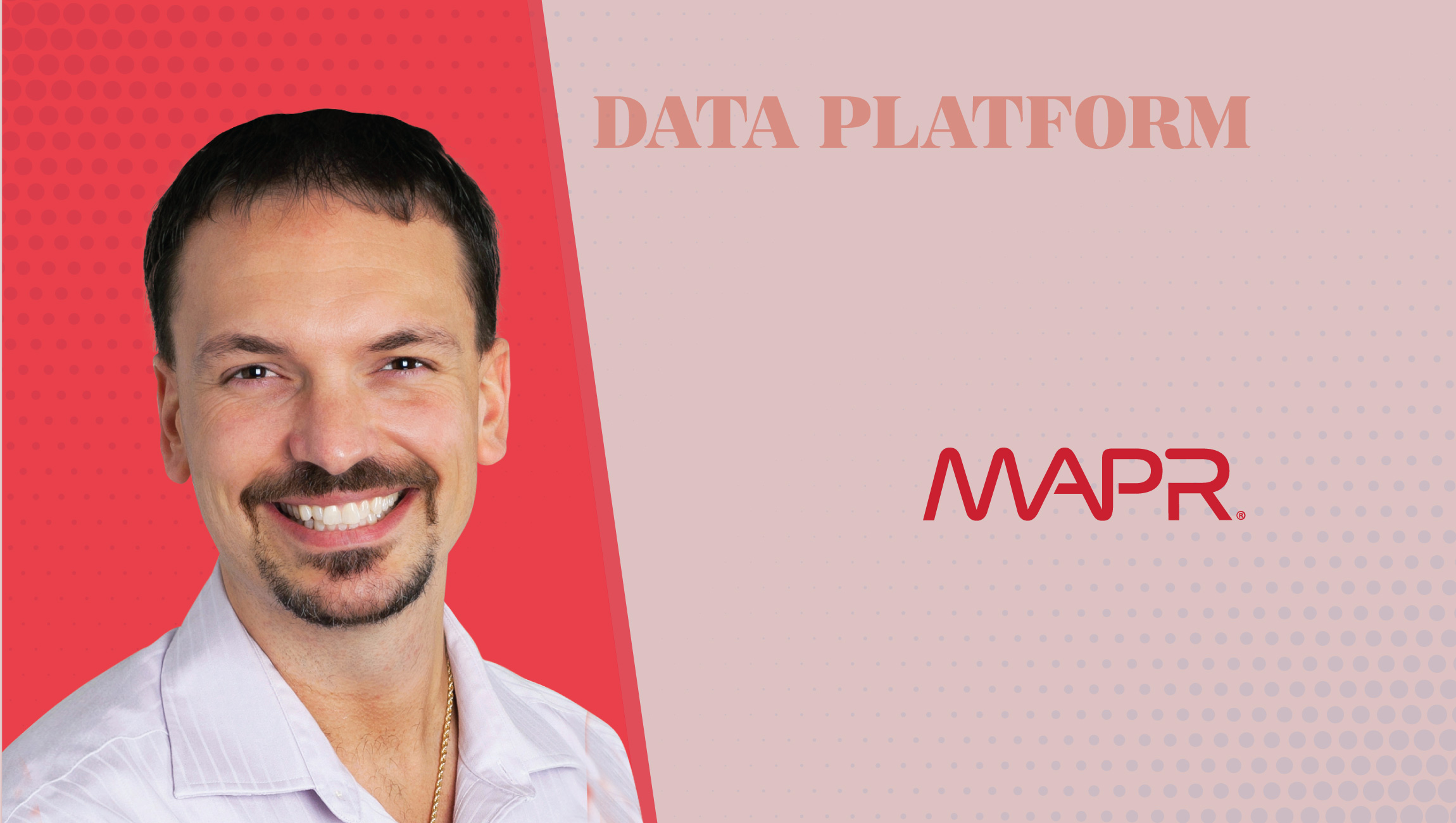How did you start in this space? What galvanized you to start at MapR?
I use to work in Digital Ad Tech. While in that industry we had requirements for very low latency and high-volume throughput. We needed a new, better scaling database and ended up selecting MapR. We were able to scale up to 60 billion ad requests per day on MapR. I fell in the love with the technology and jumped at the chance to work at MapR to help customers like me.
What is MapR and how does it transform Cloud Management for businesses?
The MapR Data Platform enables businesses to run one consistent architecture for their software platforms on-premises, at the edge, and across the Cloud. MapR is a software application that does not require specialized hardware. Most companies considering the Cloud will run in a hybrid model and MapR is uniquely suited for this since the Data Platform provides a single global namespace across the environments by which full data access is available. Additionally, when it comes to Cloud, MapR addresses the gaps to fully solve all of the security and privacy problems including data sovereignty concerns presented by GDPR.
Which industries benefit from accessing your resources?
While we fit very well in most industries, including Financial, Retail, Automotive, Telecom, Media, Oil and Gas/Energy, Manufacturing and Healthcare are some of the more dominating. Of course one of the primary benefits we deliver is the ability to use the MapR Data Platform for AI and Analytics. We reduce friction for all of the data-intensive use cases in the AI and Analytics realm by removing data silos and enabling data access for users to use all the data without having to worry about data location or identify available compute resources. This also extends to the use of advanced AI and specialized hardware like GPUs.
What is the current state of AI for Marketing, Sales and Customer Service? What is the impact of AI on the customers?
The early use cases were more descriptive and looked at segmenting customers and working on developing appealing offers and driving top-line offers. Customer 360 emerged and evolved rapidly to focus on deeper customer understanding and engagement. When paired with simple AI approaches like cheap learning instead of deep learning, the costs are minimal and broadly adopted. The cost to invest in these solutions is also straightforward and inexpensive. We’re also seeing more extensive integration of analytics into a company’s product or service. This is used to evolve business models and develop new products and services.
How do you view the growth of AI-driven revenue opportunities?
The standard off-the-shelf types of libraries and toolsets that are being created and made available in an open-source model which are rapidly enabling new and creative ways to apply AI and Machine Learning to problems. The total number of opportunities available to leverage AI are most abundant when looking at the edge. Gartner has famously claimed that the edge is going to eat the Xloud. When you look at examples like monitoring manufacturing equipment and processes with cameras and image recognition, making these processes safer and enabling better results to have a direct impact on the bottom line. Whether it be from operational efficiency, improved quality, or from a security and safety perspective.
How could digital businesses leverage Artificial Intelligence technology to strategically price their products? Which other technologies integrate with AI?
This is already happening more than most people realize. This happens in the airline industry every day. Companies like Amazon do this as well when pricing their products. There is also a lot of price optimization that can occur in the retail industry to use a combination of carrying costs to negotiate discounts versus minimizing on-hand inventory. Having long term purchasing trends with intelligent prediction models can create considerably better price spreads, so long as the cash assets are managed appropriately. Analytics are also impacting the product directly enabling usage models or transforming the business model to charge for the result of the good or service.
How should young technology professionals train themselves to work with Automation and AI-based tools?
Learn Math and Statistics. Learn the practical application of those concepts and get comfy with all the natural language processing tools and image processing tools. Then learn what the latent space is in deep learning. Also, they must not forget to consider human interactions as a key driver to many of the uses for technology and automation. Most importantly AI will not become any more perfect than humans.
What is the biggest challenge faced by Digital Transformation in 2019? How does MapR contribute to a successful Digital Transformation?
While idealistic in nature, no company can just stop using all of their legacy systems and infrastructure and turn on a dime. In that way, MapR is helping to reduce the friction required to bring together data stored and managed in legacy technologies together with all of the new approaches to handling real-time oriented, AI driven uses from new applications. The biggest problem that still exists this year is getting people to understand that they need not fear the new technologies, that they really are capable of great things. Injecting intelligence into the daily operations is possible and doing more with less for a lower price is real and possible. How potent is the Human-Machine intelligence for businesses and society? Who owns Machine Learning results?
Where do you see AI/Machine Learning and other smart technologies heading beyond 2020?
The volume of data being generated at the edge will require intelligence to not only store but to process the data at the edge. Real-time responses for real problems will not tolerate long round trips to some centralized data center. Pushing relevant and useful information from the edge to the core will be important to apply continuous and global learning to all the data. But models will get pushed back to the edge to become iteratively more intelligent. For those who have not yet embraced the real-time event streaming model from the edge to the core and back, they will be far behind all of their competitors.
What is your opinion on “Weaponization of AI/Machine Learning”? How do you promote your ideas?
This is a very dangerous topic because AI has been created to simulate a person writing a story and these stories are very believable. It isn’t much of a stretch to imagine combining that with other AI technologies like visual identification engines as well as speech conversion software and suddenly systems that can speak, which can notice facial gestures and with sentences and ideas that sound like they are legitimate. Kind of scary on the surface.
Ethics, software and AI are critical. The young technology professionals need to learn and understand how to apply rational logic that protects people first and make sure that human rights are not being violated. They must take a stand against anything or anyone that violates those ethics.
Jim Scott has held positions running Operations, Engineering, Architecture and QA teams. He is the cofounder of the Chicago Hadoop Users Group (CHUG), where he coordinates the Chicago Hadoop community. Scott has worked in the Consumer Packaged Goods, Digital Advertising, Digital Mapping, Chemical and Pharmaceutical industries.
He has built systems that handle more than 50 billion transactions per day, and his work with high-throughput computing at Dow Chemical was a precursor to more standardized big data concepts like Hadoop

MapR Technologies is a visionary Silicon Valley software company and creator of the next-generation data platform for AI and analytics, with the scale and reliability required by enterprise-grade, mission-critical deployments. The MapR Data Platform delivers the power of dataware to accelerate data-driven innovation. Forward leaning companies such as Cisco, Philips, and Société Générale, are able to create new data-driven solutions to outperform the competition.



